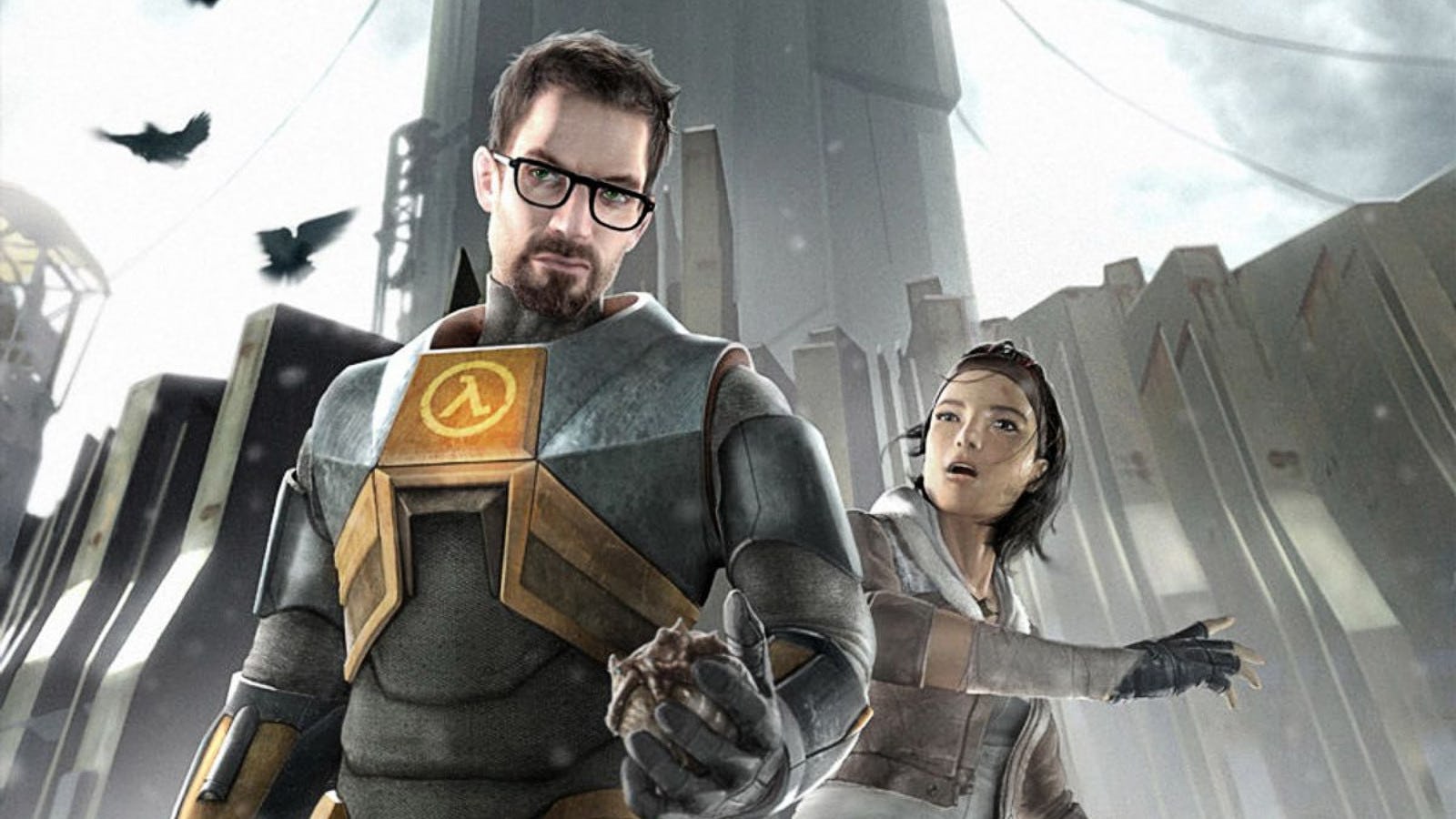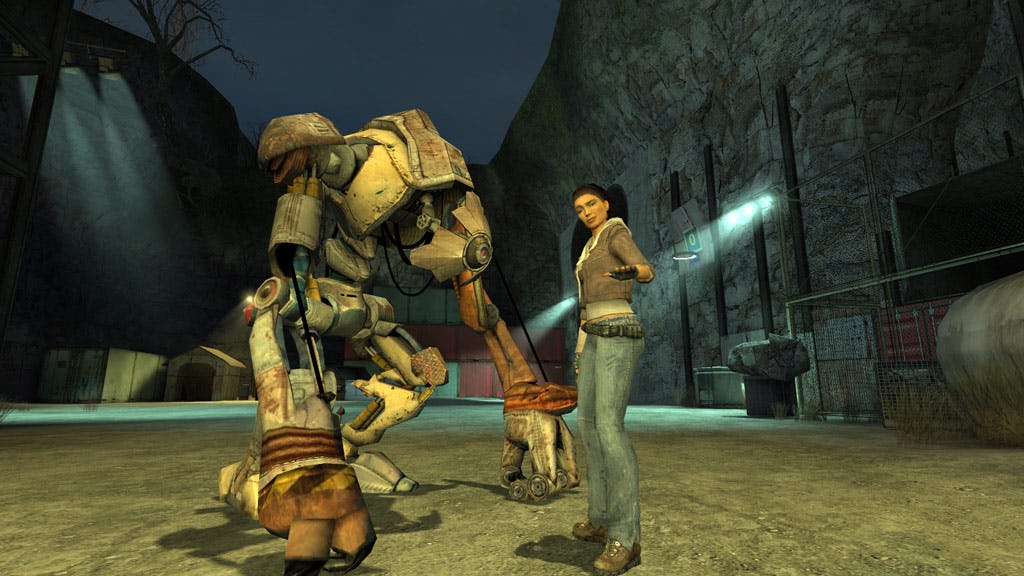
Some games become legendary by doing things no one has ever seen before. Others stand the test of time because they’re just that good.
Half-Life 2 falls somewhere in the middle. Plenty of brilliant first-person shooters had come before it, and its development wasn’t exactly a model for others to follow. But despite not being as groundbreaking as some genre-defining games, Half-Life 2 found a new way to approach familiar elements, and did it so well it still stands out two decades later, despite a development and launch so bad you might think developer Valve was cursed.
Half-Life 2 was released on November 16, 2004, more than a year after it was supposed to. Valve president Gabe Newell famously announced at E3 2003 that Half-Life 2 would launch just months later on September 30 of that year. That would not come to pass, and by the time the world actually saw Half-Life 2, Valve would go through a harrowing final lap of development that included an overzealous thief stealing its source code.

On September 23, 2003, Valve finally revealed that Half-Life 2 was being delayed, after months of maintaining that it was on track for its initial release date. Fans were furious at the last-minute change, and it would only get worse for Valve from there.
In early October, the game’s source code was published online, followed by a playable version of the game cobbled together from its unfinished files. The leak came shortly after Valve had discovered suspicious activity on its servers, which ended up being a hacker snooping through internal files. The leak revealed just how far Half-Life 2 was from completion, making it clear that Valve must have known for some time that it wouldn’t be making its originally announced launch date.
“We lost a fair amount of time because of the theft," Newell told GameSpot. "It was sort of like running this race and you fall down. You eventually get back up and probably run just as fast as you did before. But for a while you are stunned and just staring around, wondering what just happened."

Though some employees wondered if the hack would spell the end for Half-Life 2, Valve eventually recovered. The company settled into a reportedly incredibly stressful final year of development, which saw the game grow from a disconnected set of concepts into a masterpiece, at the cost of long and difficult working hours. But the work paid off, and Half-Life 2 was finally completed in October, shipping the next month.
These days, Steam is the de facto platform for buying and playing games on PC, but that wasn’t the case in 2004. Half-Life 2 was the first game to require Steam at launch — and it couldn’t have gone worse. Players could preload Half-Life 2 a few days before launch, and many reported being unable to connect to servers. Then on launch day, the servers used to authenticate purchases were overloaded, leaving both players who bought the game through Steam and those who bought retail copies unable to play. At the time, Steam looked like a failure, and Half-Life 2 along with it.
That, of course, is not how events turned out. After the dust settled on its chaotic development and launch, Half-Life 2 was immediately lauded as one of the best games of all time. It’s not by any means the first FPS to center its story, but Half-Life 2’s focus on characters and worldbuilding made it stand out in a genre that’s better known for mechanical fun than narrative weight. Its semi-open environments and likable cast brought its world to life, to some extent even overshadowing its gameplay.

That’s not to say that Half-Life 2’s combat doesn’t hold up. Protagonist Gordon Freeman’s signature weapon may be his crowbar, but it’s the game’s gravity firearm that defines Half-Life 2. Taking advantage of the Havok physics engine, the iconic weapon lets players pick up objects and even enemies to fling them around levels causing mayhem. Where many FPS games prize quick reflexes above all, Half-Life 2 hones in on creativity instead.
Nowhere is that more apparent than in Ravenholm. One of the most memorable sequences in Half-Life 2 sticks you in the thoroughly terrifying village of Ravenholm, where your gravity firearm — and the copious amounts of buzzsaws lying around — are your best defense against armies of headcrabs who call the level their home. Ravenholm represents a switch to full-on horror in the midst of Half-Life 2’s action, showing that the game’s incredible sense of atmosphere and excellent level design are the true stars of the game.
If there’s one way that Half-Life 2 really did revolutionize first-person shooters, it was by showing how much room they still had to grow. The game demonstrates that story and tone can elevate a genre known for its bloodthirstiness into a narrative powerhouse — at least if you have the nearly unlimited resources poured into Half-Life 2’s development. Valve went through hell to get its shooter onto Steam’s digital shelves, and games wouldn’t be the same if it hadn’t.







